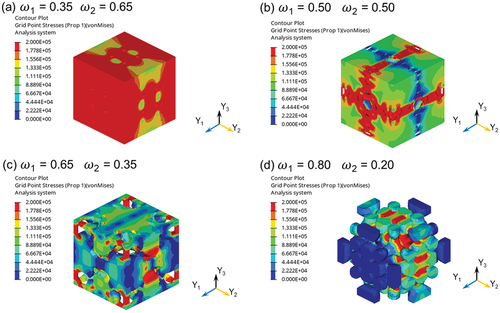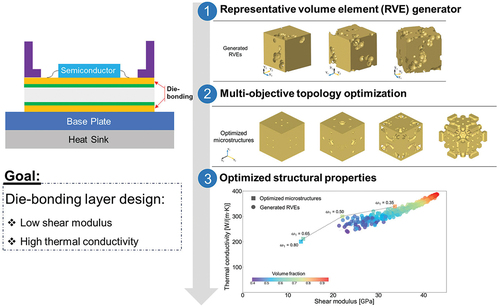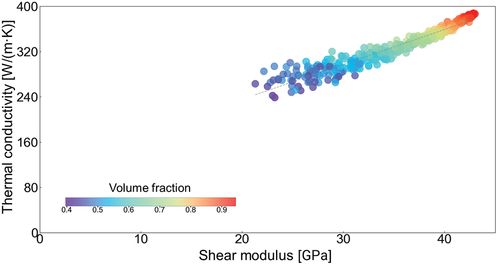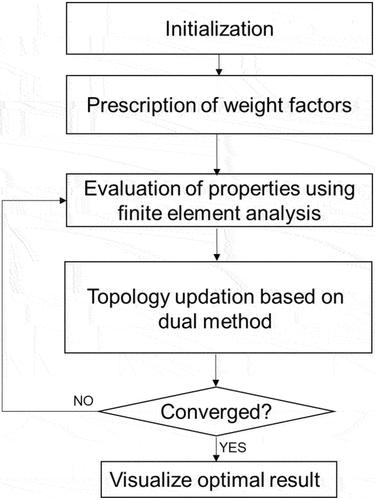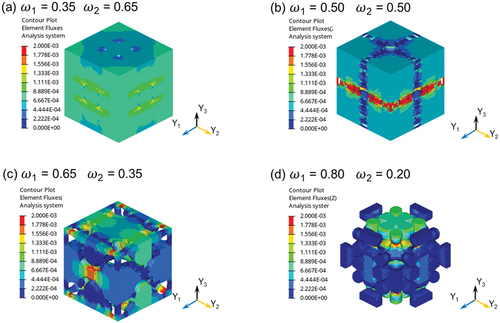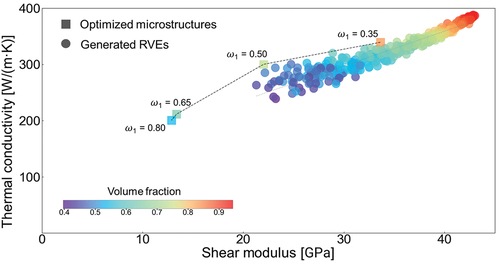Figures & data
Figure 1. Process of constructing representative volume elements. (a) Generation of the first seed on the surface of = 0. (b) Generation of abundant seeds. (c) Radius distribution of seeds to obtain interconnected pores. (d) Random generation of separated pores.
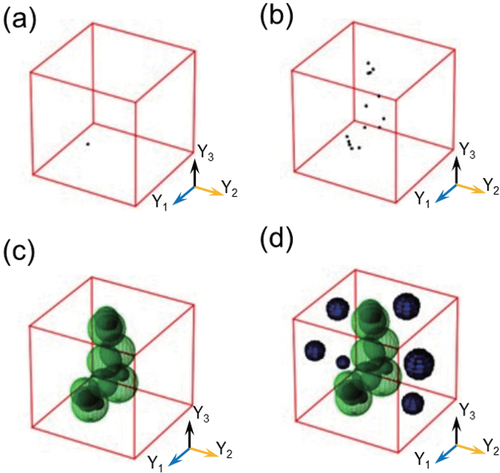
Figure 3. (a) Generated representative volume element. (b) Geometric periodicity on one side face and the corresponding opposite face of the cube.
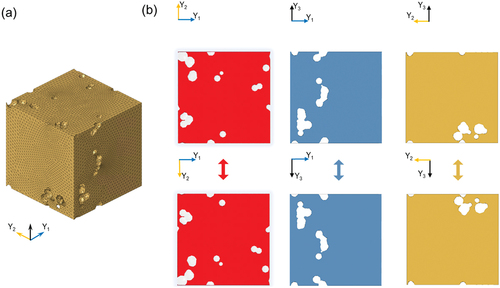
Figure 4. Shear modulus of the generated representative volume elements using high-throughput evaluation.
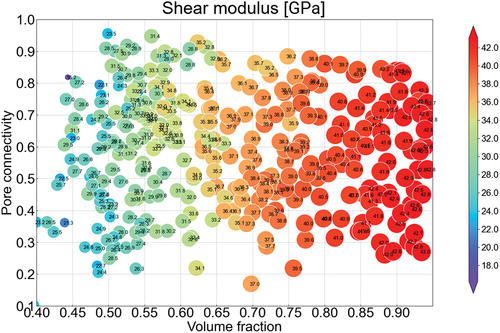
Figure 5. Representative volume elements (RVEs) with identical volume fractions (
50%) but different pore connectivity.
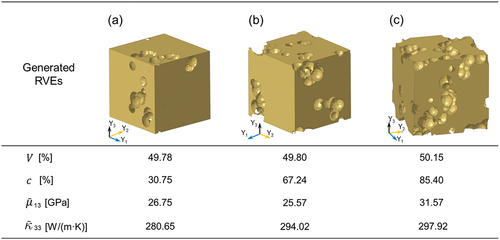
Figure 6. Thermal conductivity of generated representative volume elements using high-throughput evaluation.
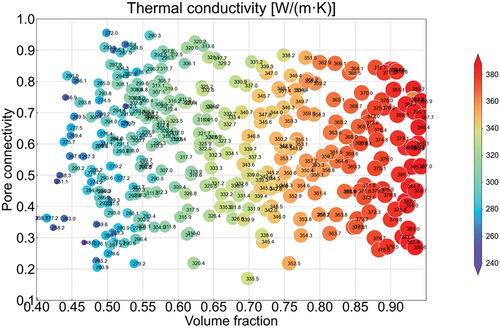
Figure 9. Multi-objective topology optimization using different volume fraction constraints: optimized structures and their properties for =
= 0.5.
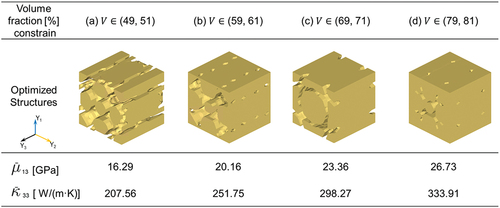
Figure 10. Convergence history of multi-objective topology optimization using different weight factors: (a) Objective function (b) Shear compliance (c) Thermal compliance, and (d) Volume fraction.
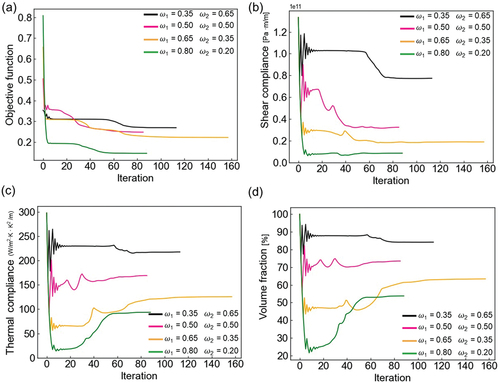
Figure 11. Multi-objective topology optimization using different weight factors: optimized structures and their properties under orthotropic assumptions.
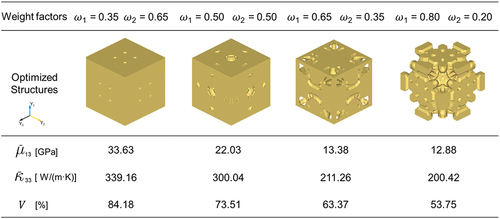
Figure 12. Effect of weight factor on von mises stress of the optimized microstructures under the imposed macroscopic strain mode .
